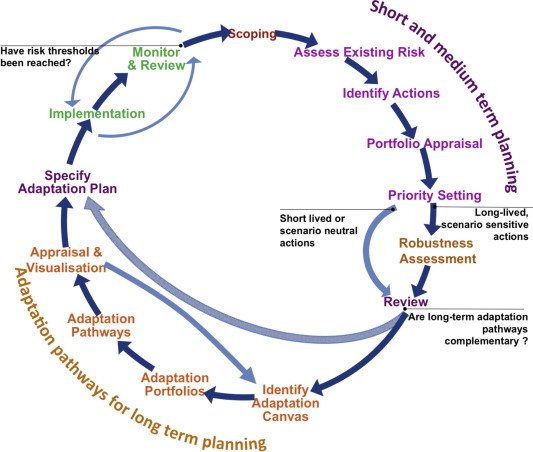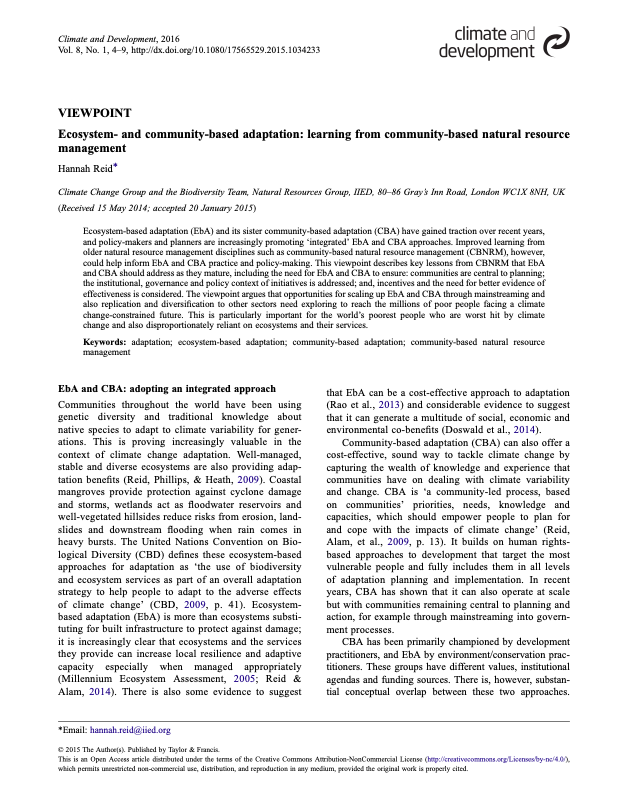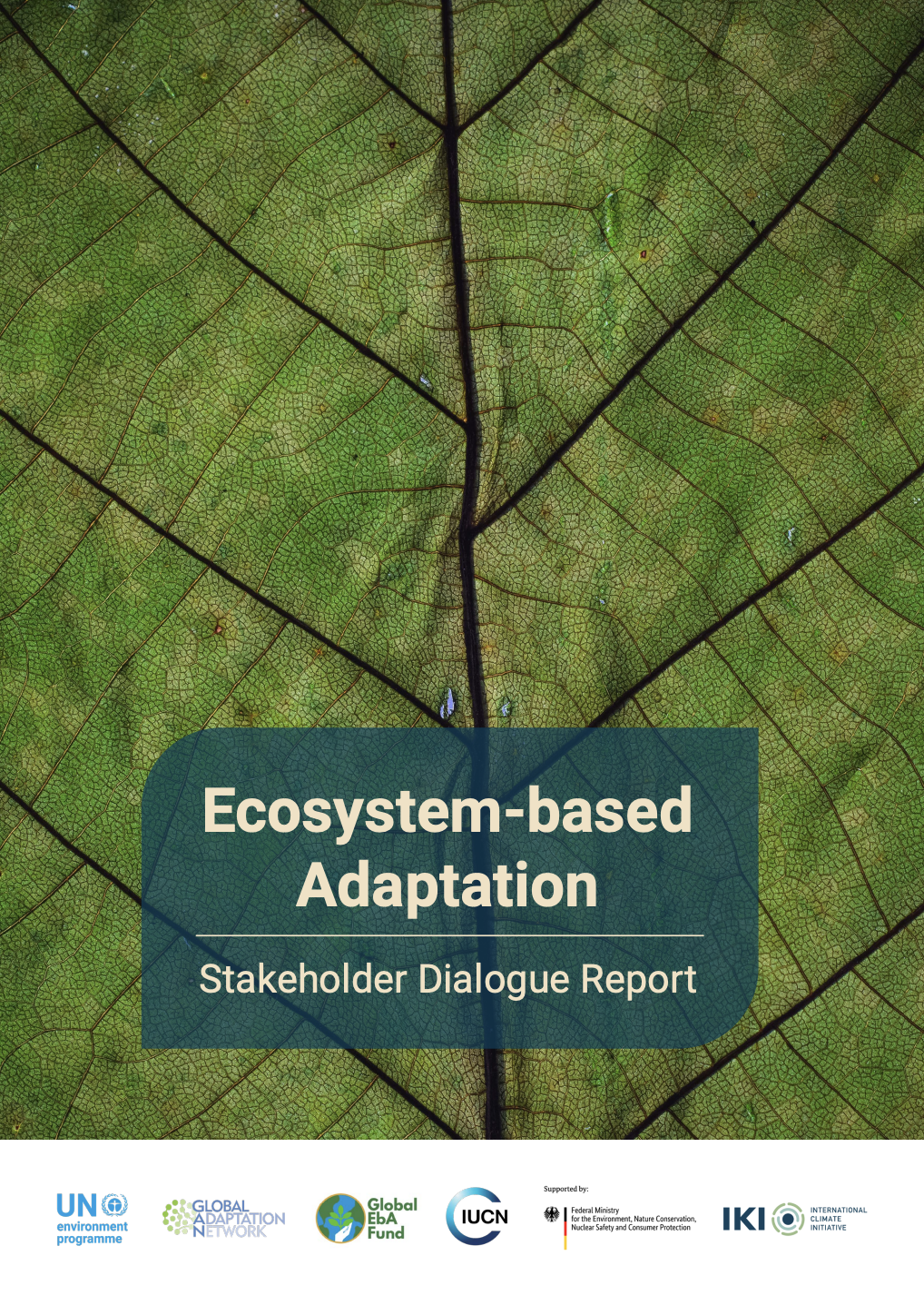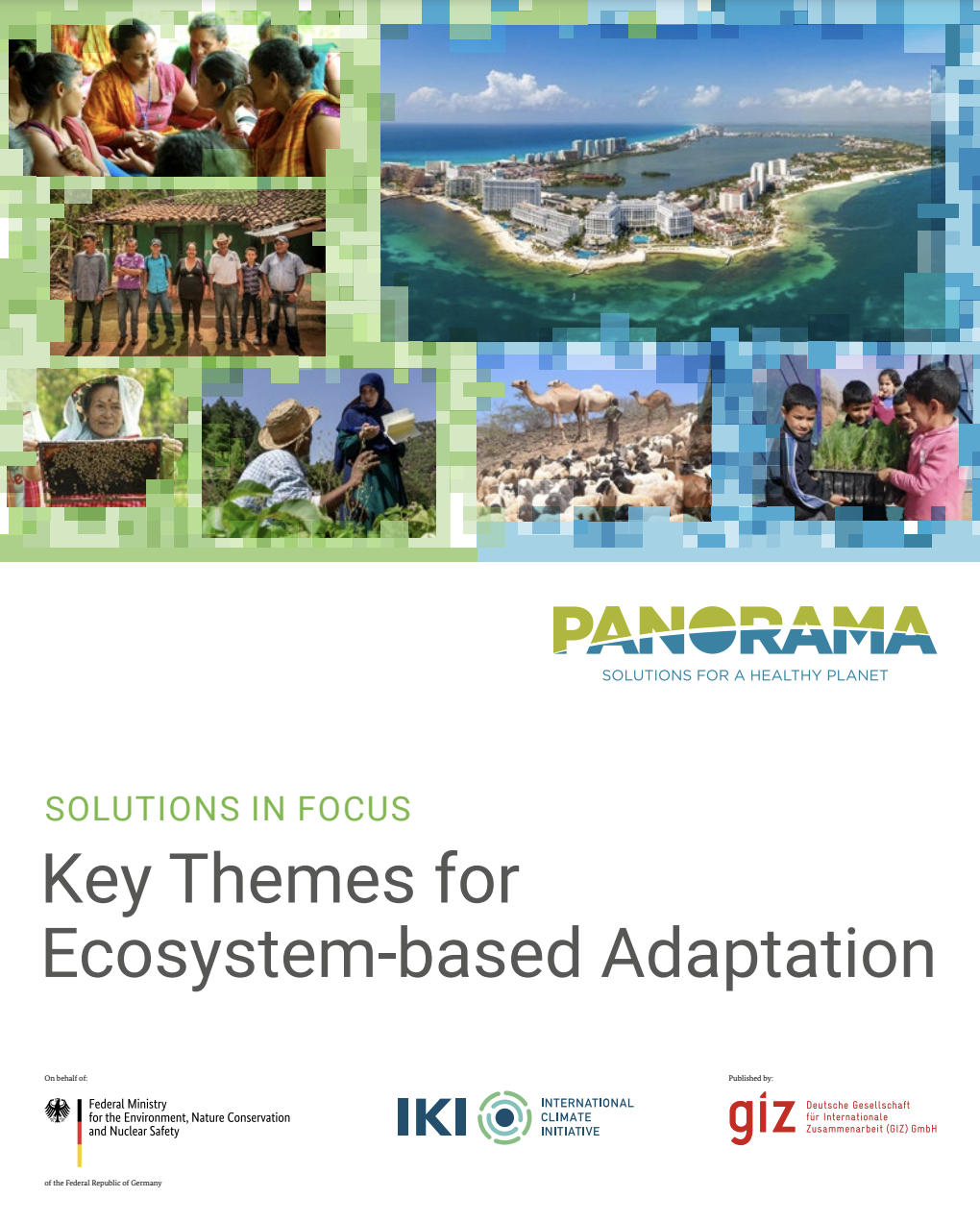Various Approaches to Long-Term Adaptation Planning
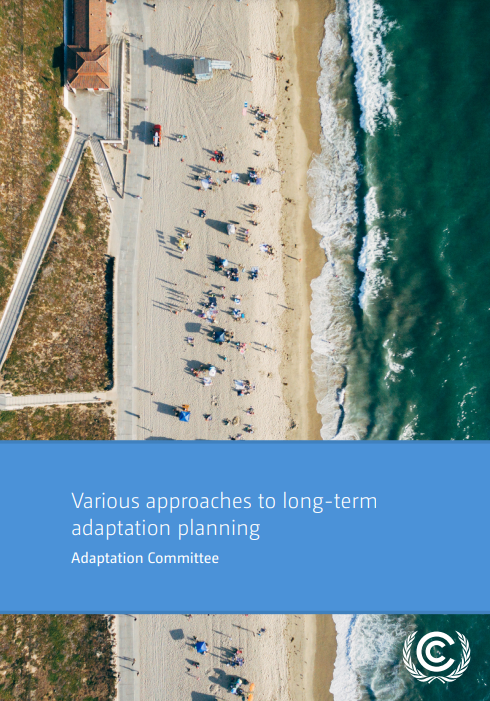
Posted by
UNFCCC Adaptat…Published
Abstract
Since the adoption of the Paris Agreement in 2015, countries are increasingly developing national long-term adaptation plans and strategies. This paper summarises different approaches to long-term adaptation planning ranging from ecosystem-based adaptation (EBA), community-based adaptation (CBA) approaches, to risk based approaches that countries can use individually or in combination. A long-term approach to adaptation can also facilitate the integration of adaptation into development planning processes and strategies, in a coherent manner within all relevant sectors and at different levels, as appropriate within each country.
This paper is produced by the Adaptation Committee as part of its provision of technical support and guidance to the Parties to the UNFCCC with the aim of enhancing long-term adaptation planning and action, and to share information with Parties as they engage in the process to formulate and implement national adaptation plans.
Long-term adaptation planning is increasingly receiving attention as a valued approach to enhanced action on adaptation. Since 2015, when the Paris Agreement was adopted, there has been an increase in the number of countries that have developed national long-term adaptation plans and strategies. The 2015 Paris Agreement includes a long-term global temperature goal that aims to keep the increase in global average temperature to well below 2°C above pre-industrial levels. It also calls for pursuing efforts to limit the temperature increase to 1.5°C, because this would significantly reduce the risks and impacts of climate change. Parties also agreed a long-term adaptation goal that aims to enhance adaptive capacity, strengthen resilience and reduce vulnerability to climate change.
Sustainable development needs a long-term vision and planning for transformation. To contribute to sustainable development and to ensure an adequate adaptation response, it is important to integrate adaptation with the Sustainable Development Goals (SDGs), as well as with long-term national development plans. Some countries have already integrated the process to formulate and implement National Adaptation Plans (the NAP process) into sustainable development planning.
Long-term planning refers to planning activities that take into account how climate and other factors are likely to change over future decades. The NAP process plays an important role in the evolution of long-term adaptation planning. Integration of NAPs into national development planning processes and strategies will help reduce vulnerability to the adverse effects of climate change. The NAP process can be useful in facilitating long-term planning, particularly as countries update NAPs periodically. This process enables Parties to identify medium- and long-term adaptation needs, and to develop and implement strategies and programmes to address those needs. It will assist with the integration of the global goal on adaptation, the SDGs, and the achievement of the goal to limit the rise in global average temperature.
There are various approaches to adaptation planning and actions, ranging from ecosystem-based adaptation (EBA), community-based adaptation (CBA) approaches, to risk based approaches that countries can use individually, in combination, or utilize elements of several approaches for a particular situation.

